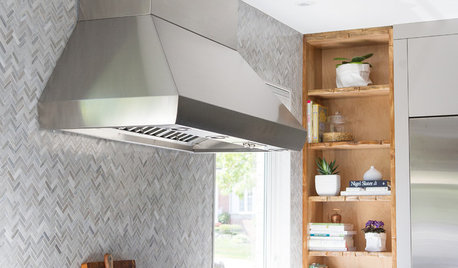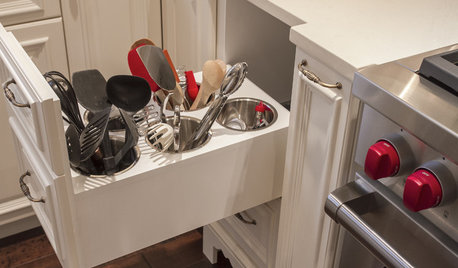hoods - baffles vs. centrifugal and other issues
cyalexa
10 years ago
Featured Answer
Sort by:Oldest
Comments (6)
gigelus2k13
10 years agolast modified: 9 years agodeeageaux
10 years agolast modified: 9 years agoRelated Professionals
Portland Kitchen & Bathroom Designers · Salmon Creek Kitchen & Bathroom Designers · White House Kitchen & Bathroom Designers · Terryville Kitchen & Bathroom Designers · Eagle Kitchen & Bathroom Remodelers · Los Alamitos Kitchen & Bathroom Remodelers · Omaha Kitchen & Bathroom Remodelers · Saint Helens Kitchen & Bathroom Remodelers · Toms River Kitchen & Bathroom Remodelers · Eureka Cabinets & Cabinetry · Mount Prospect Cabinets & Cabinetry · North Massapequa Cabinets & Cabinetry · Universal City Cabinets & Cabinetry · Warr Acres Cabinets & Cabinetry · University Park Cabinets & Cabinetrycyalexa
10 years agolast modified: 9 years agokaseki
10 years agolast modified: 9 years agojwvideo
10 years agolast modified: 9 years ago
Related Stories

KITCHEN DESIGNHow to Choose the Right Hood Fan for Your Kitchen
Keep your kitchen clean and your home's air fresh by understanding all the options for ventilating via a hood fan
Full Story
KITCHEN DESIGNWhat to Know When Choosing a Range Hood
Find out the types of kitchen range hoods available and the options for customized units
Full Story
KITCHEN APPLIANCESWhat to Consider When Adding a Range Hood
Get to know the types, styles and why you may want to skip a hood altogether
Full Story
LIFEHouzz Call: Show Us Your Nutty Home Fixes
If you've masterminded a solution — silly or ingenious — to a home issue, we want to know
Full Story
HOUZZ TOURSMy Houzz: Turning a Netherlands Barn Into a Country Home
Once a place for chilling milk, this Dutch home now lets the owners chill out in easygoing comfort
Full Story
KITCHEN DESIGNKitchen of the Week: Function and Flow Come First
A designer helps a passionate cook and her family plan out every detail for cooking, storage and gathering
Full Story
HOUSEKEEPINGHow to Clean Your Range and Oven
Experts serve up advice on caring for these kitchen appliances, which work extra hard during the holidays
Full Story
DESIGN DETAILSThe Secret to Pocket Doors' Success
Pocket doors can be genius solutions for all kinds of rooms — but it’s the hardware that makes all the difference. See why
Full Story
KITCHEN STORAGE13 Popular Kitchen Storage Ideas and What They Cost
Corner drawers, appliance garages, platter storage and in-counter knife slots are a few details you may not want to leave out
Full Story
MOST POPULARThe 15 Most Popular Kitchen Storage Ideas on Houzz
Solve common kitchen dilemmas in style with custom and ready-made organizers, drawers, shelves and more
Full Story







kaseki